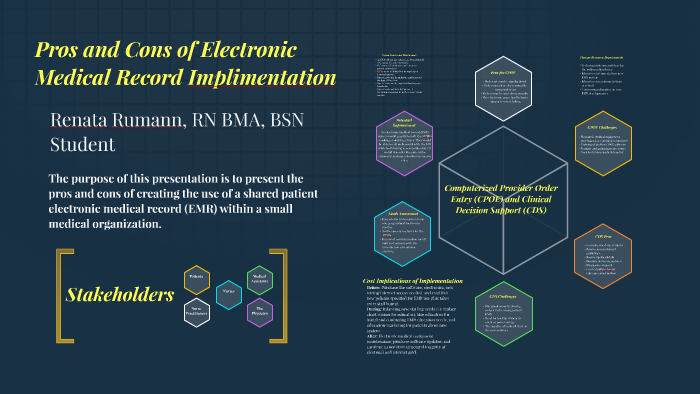
 It provided quick and complete documentation, fulfilling standards for accreditation of health care facilities and making audits a lot easier. An electronic home page that details all the stages of care that the patient has gone through, makes for an efficient collaborative tool. Very often, there is a lack of communication between doctors, nurses, residents, hospitalists and specialists, which leads to medication errors, delay in diagnosis, repetition of investigations or duplication of drugs. The accessibility of patient records enabled physicians to work together on patient care. EHRs for inpatients admitted in hospitals or healthcare centers, could be updated with detailed patient notes and hand off notes, which made it easy for different treating doctors to track the patient’s prognosis. There was a reduced dependency on paper-based record keeping, which helped to maintain patient confidentiality and reduced chances of the paperwork being misplaced. Patients can get access to this data and can also send it to specialists they have been referred to for continuity of care. All these records can be preserved on secure servers. Most EHRs had the ability to deliver e- prescriptions which made it easy to refill medication doses. Follow up notes for successive visits could also be entered, making it easy to chronologically access information if required. Details about patient history, medication history and examination findings could be entered into online patient portals, which could then be integrated with lab or radiology reports. The cookie is set by the GDPR Cookie Consent plugin and is used to store whether or not user has consented to the use of cookies. The cookie is used to store the user consent for the cookies in the category "Performance". This cookie is set by GDPR Cookie Consent plugin.
It provided quick and complete documentation, fulfilling standards for accreditation of health care facilities and making audits a lot easier. An electronic home page that details all the stages of care that the patient has gone through, makes for an efficient collaborative tool. Very often, there is a lack of communication between doctors, nurses, residents, hospitalists and specialists, which leads to medication errors, delay in diagnosis, repetition of investigations or duplication of drugs. The accessibility of patient records enabled physicians to work together on patient care. EHRs for inpatients admitted in hospitals or healthcare centers, could be updated with detailed patient notes and hand off notes, which made it easy for different treating doctors to track the patient’s prognosis. There was a reduced dependency on paper-based record keeping, which helped to maintain patient confidentiality and reduced chances of the paperwork being misplaced. Patients can get access to this data and can also send it to specialists they have been referred to for continuity of care. All these records can be preserved on secure servers. Most EHRs had the ability to deliver e- prescriptions which made it easy to refill medication doses. Follow up notes for successive visits could also be entered, making it easy to chronologically access information if required. Details about patient history, medication history and examination findings could be entered into online patient portals, which could then be integrated with lab or radiology reports. The cookie is set by the GDPR Cookie Consent plugin and is used to store whether or not user has consented to the use of cookies. The cookie is used to store the user consent for the cookies in the category "Performance". This cookie is set by GDPR Cookie Consent plugin. 
The cookie is used to store the user consent for the cookies in the category "Other.

The cookies is used to store the user consent for the cookies in the category "Necessary". The cookie is set by GDPR cookie consent to record the user consent for the cookies in the category "Functional". The cookie is used to store the user consent for the cookies in the category "Analytics".

These cookies ensure basic functionalities and security features of the website, anonymously. Necessary cookies are absolutely essential for the website to function properly.








 0 kommentar(er)
0 kommentar(er)
